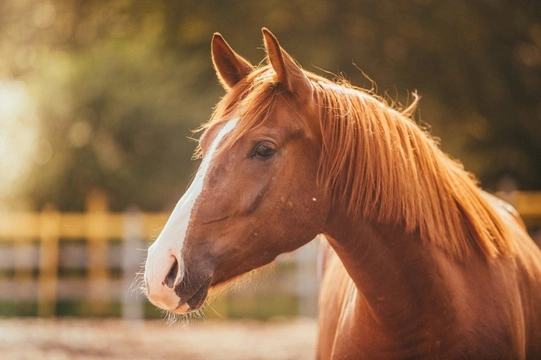
How to prevent your horse from getting laminitis
This year, there seems to have been more laminitis about than ever before. Was it because of the mild winter and horses arriving in springtime simply carrying more weight?
Do you realise that 90% of laminitis cases have an underlying hormonal cause such as Equine Cushing’s Disease or Equine Metabolic Syndrome or EMS? If your horse is a repeated sufferer, this is certainly something worth discussing with your vet. A blood test can confirm a diagnosis of either of these conditions.
If you are looking after a horse or pony that has been diagnosed with laminitis either now or in previous years, close hands-on management is key to preventing further outbreaks. Take a read of our top tips to help you manage this nasty condition effectively.
- Horses or ponies diagnosed with laminitis are usually confined to the stable initially.If the outbreak is mild and with appropriate medication such as an anti-inflammatory like bute, they can come sound very quickly. However, your vet may insist on confinement for six weeks or even longer. Follow this advice and don’t turn them out just because they look okay. The foot is still recovering from inflammation and is vulnerable to the increased stresses and pressures of paddock turnout and ridden work
- Don’t starve the horse even if weight loss is clearly a requirement. A horse’s gut needs fibre to function. Cut out all feeds and offer soaked hay and an alternative like Fast Fibre which is suitable for laminitics and ideal for the administration of medication in powder form as it is a wet feed
- Recent research shows that laminitic horses should have a maximum of 10% naturally occurring sugar in their diet. There are plenty of feeds touted as being perfect for laminitis which is well above this level. Always read the label. Cut out anything with added sugars so molassed chaff, apple flavoured chop, even polos unless they are sugar-free
- Weigh the hay to ensure the ration is appropriate for the animal’s weight and size.Double or triple net to slow down the intake and to encourage the horse to work a little harder to eat. This helps alleviate boredom if the horse is being kept in for several weeks as well. Hang nets at different points in the stable
- Follow your vet’s advice with regard to shoeing or foot trimming. The vet and farrier need to work closely together to achieve a successful outcome
- Restrict turnout and strip graze. Initial turnout time may be as short as ten minutes increasing gradually over the days and weeks
- Avoid grazing between 6 am and 2 pm if at all possible. Fructosamine is the carbohydrate in the grass which is thought to be responsible for laminitis and its levels are highest during the morning
- Never, ever turn out onto frosty land in the winter months. Wait until the field has thoroughly thawed before putting your horse out to graze
- If you struggle to control your horse’s weight, take professional advice. Feed companies will come to your yard and both weigh and condition score your horse. They can advise on an appropriate feed but this will likely be from their own range and not across the entire market so retain an objective viewpoint
- Learn how to feel for the digital pulse so you can monitor the response of your horse’s feet to different conditions. Understand what is normal for your horse so you can spot early signs of alterations in the gaits which can indicate discomfort and may be a prelude to a laminitic episode. Remember all feet can feel warm at certain times and a digital pulse can be created just by the act of walking so context is very important. Some horses just don’t feel right and are a little reluctant to go forward, it can be as subtle as that
- Vulnerable or prone horses and ponies should not be administered corticosteroids as treatment for another, unrelated condition. These can induce laminitis in susceptible animals and should only be used when all other methods are exhausted and as a last resort
- Laminitis can affect the hind feet and not the front feet so always check all four feet as part of your routine. Sometimes, it will affect just one foot of the pair and not the other or, one may be worse than the other when it is present in both
Laminitis is the second highest cause of lameness in horses and ponies superseded only by pus in the foot or an abscess. Whilst much more is understood about the biochemistry of diseases such as Cushings and EMS, the buck still stops with the horse owner who shoulders the burden of day to day management.
Horses can start to show signs of Cushing's as early as their teenage years so a simple blood test at annual vaccination can keep an eye on this. A positive outcome does not necessarily herald the requirement for daily medication or that laminitis is imminent. Your vet can discuss with you when it is best to intervene and what would be the appropriate drug dosage. Certainly, it can be harder to control laminitis in horses and ponies with Cushing’s Disease if they are not receiving the standard treatment for this condition.



